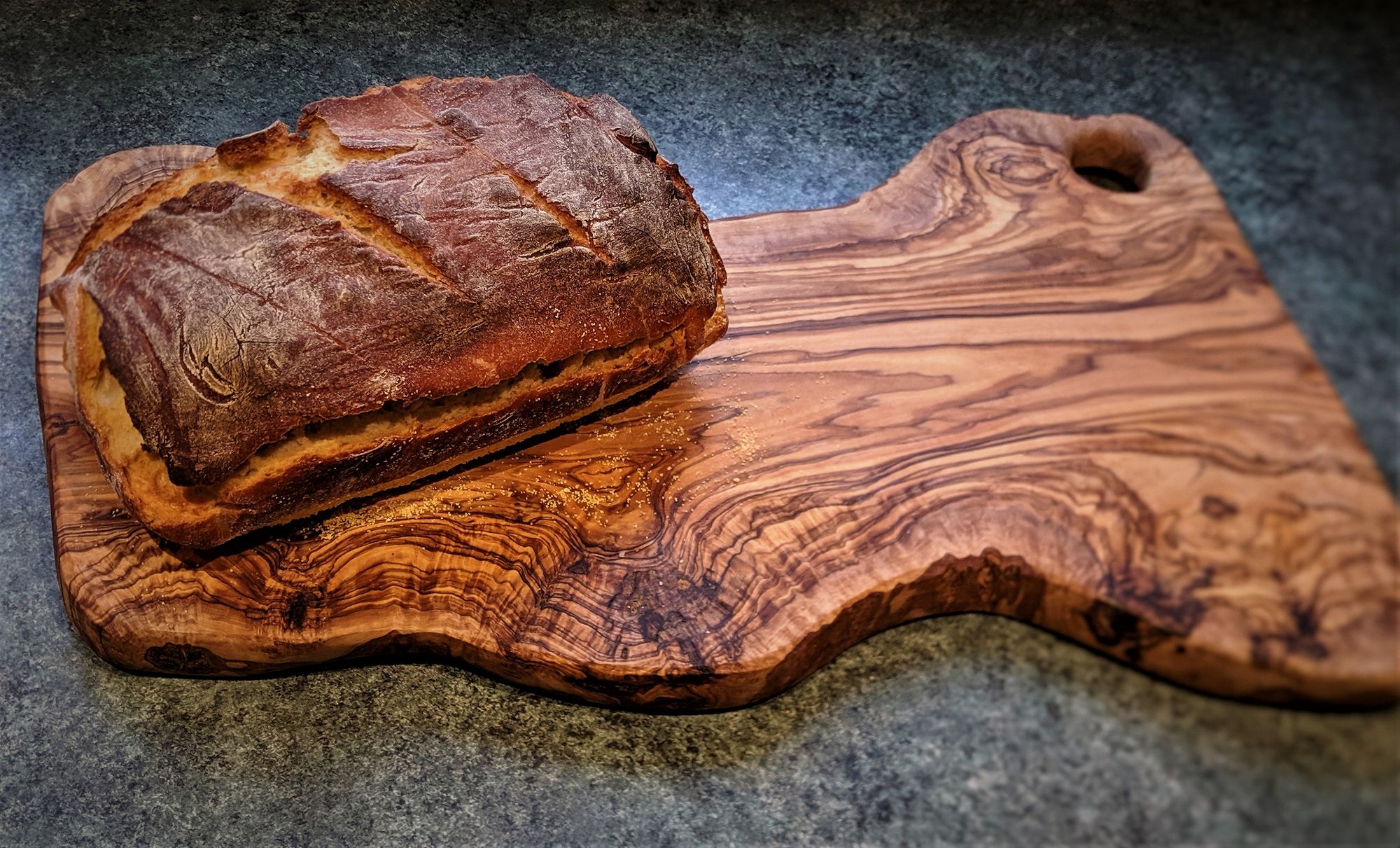Scrumptious Sourdough Loaf
I always think of bread as the original comfort food. On the very best of days, and the very worst of days, you can always count on bread to fill you up and give you the boost you need. Enjoy with oil and vinegar, your favourite sandwich filling, or a soup, then use left overs as croutons!

Bread -the ultimate comfort food.
I've been doing a little research lately and found the Instant Yeast is actually a very recent invention- before the 70s one would use live yeast which often came from beer brewers. I decided to go back to basics and do what my ancestors would have done- create my own live yeast, or sourdough starter.
This loaf has a beautifully irregular crumb and crunchy crust- the perfect accompaniment to oil and vinegar, or a Ploughman's lunch!
For the Sourdough Starter
Ingredients
3 grapes- peeled and finely chopped
500g/ 4 cups white flour (strong white bread flour if you're in the UK) I found Doves Farm provided the best restaults
500ml tepid water
Method
Mix all the ingredients together and place in an airtight container. Leave for at least 2 days- you should see the mixture bubble and increase in size. After 3 days discard half of the mixture, add 250g flour (2 cups) and 250ml tepid water, mix well, cover and leave for another 2 days. The mixture should be bubbly and have a slightly sour smell to it, it is now ready to use. If you are not ready to use the mixture, discard half of the mixture, and add 250g flour (2 cups) and 250ml tepid water and mix. Repeat this process every 3 days to ensure your starter remains healthy- this process is called 'feeding'. If you prefer you can repeat this process once a week however, you would need to leave the started in the fridge rather than at room temperature. Of course, rather than discarding the mixture when refreshing or feeding the starter, this can be used in bread making!
For the Sourdough Loaf
Ingredients
350g / 3 cups flour (plus extra for dusting)
250g sourdough starter
around 150ml tepid water
Salt to taste- I like to use around 5g (1tsp) garlic salt for extra flavour
semolina or polenta for dusting
Method
In a large mixing bowl add 200g of flour and some of the water- you want the flour and water to make a dough but do not want the dough to be too wet. Turn the dough out onto a floured surface and kneed.
-To kneed dough, stretch it with the heel of your hand, then pull it back repeatedly. I find to get a good texture it's best to knead the dough for around 10 minutes, you should feel the texture change and the dough should become quite elastic. You can perform the 'window pane' test- pulling apart some dough gently to see if you can make an almost see-through piece without the dough breaking. This is a good test to ensure the dough is elastic- as the bread ferments and bubbles form, the elasticity in the bread will allow those bubbles to grow without bursting allowing for your bread to have a loose (rather than close) crumb for a lighter loaf. Mixing the flour and water before adding the starter gives a lighter texture-
Once the flour and water mixture has been kneeded and feels elastic, return it to the mixing bowl, and leave for 20 minutes (this is called autolyse).
- Be warned, this bit is MESSY-
Add the sourdough starter and the rest of the flour and knead to bring the ingredients together in the bowl- once the dough is mixed, turn it out onto a floured surface again and knead for around 7-10 minutes until the dough feels elastic again. Dust the bowl with flour and add the dough, cover and leave to rest for at least 2 hours (this is called the first prove). I tend to start this when I get home from work in the evening, then leave this ro prove overnight.
After the dough has rested, turn it out of the bowl and knock the air out of it, knead for a couple of minutes then shape as desired- I went for a traditional loaf tin. Line your tin with parchment/ greaseproof paper and dust with a layer of semolina or polenta to help prevent sticking. Add your dough and cover, leave again for at least two hours (this is called the second prove). I often do this in the morning before I leave for work so the dough can prove throughout the day ready for me to bake in the evening.
Preheat your oven to 220°C/ 430°F. Score your loaf as you like, and add both your loaf and a baking tin with 2cups water to the oven- the water will heat up creating steam in the oven which will give your bread a good strong crunchy crust. Bake for 25 minutes, then turn the temperature down to 200°C/400°F for another 20 minutes.
Remove your loaf from the oven. To check it has cooked you can 'knock' on the base of the loaf- this should provide a hollow sound.
Leave to cool, then slice and enjoy!

